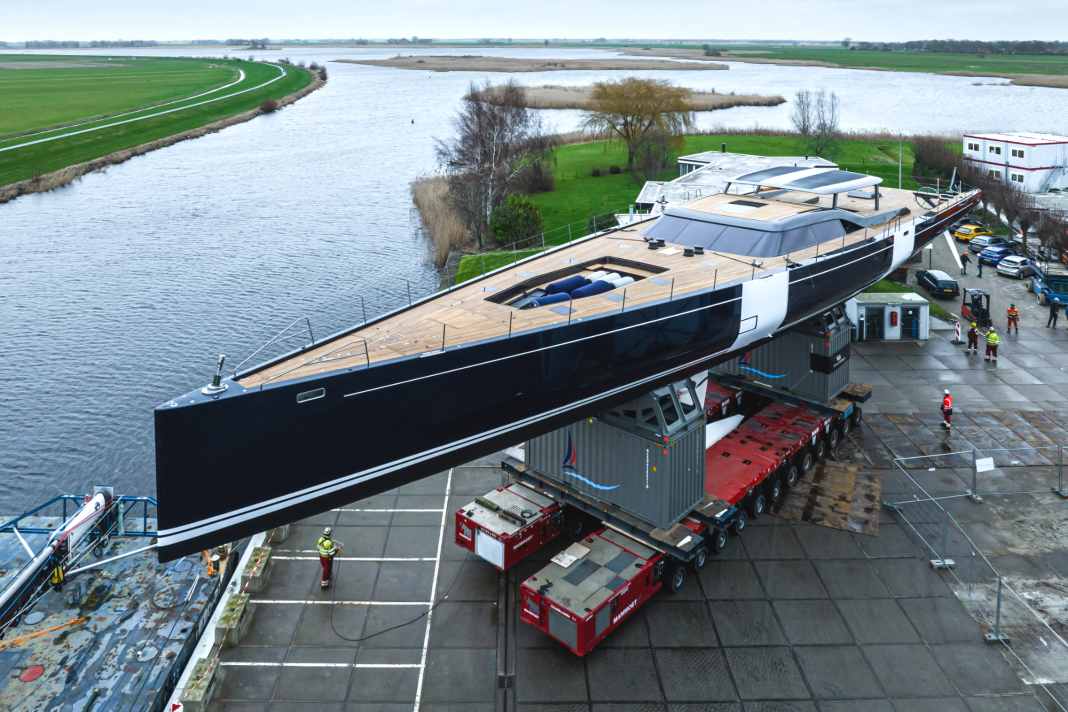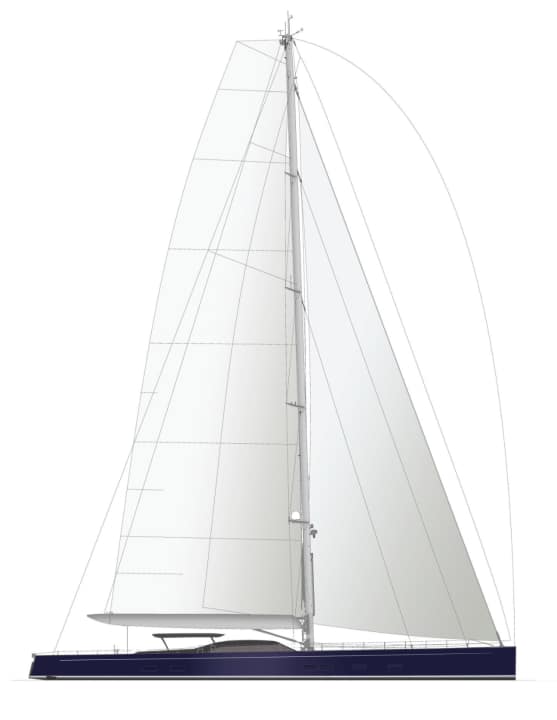





"Nilaya", this name was previously emblazoned in exactly the same font on the transom of a 34-metre-long Baltic. The owner successfully competed in regattas with the carbon cruiser built in 2010, had it refitted in 2017 and sold it in the summer of 2022 (now "Shagala Bagala"). So now aluminium instead of carbon. Not quite. Royal Huisman had the 17.50-metre-long superstructure laminated with carbon fibre by sister company Rondal.
And the Dutch also welded the aluminium hull - this term will be permitted due to the wide and flat frames - under strict weight specifications. Royal Huisman calls the new hybrid construction "Featherlight", which is intended to make "Nilaya" eleven per cent lighter in total compared to the previous construction method. The traditional shipyard already uses Alustar, a material that is 20 percent stronger than conventional aluminium.
Lightweight construction with modern materials and proprietary software
"The hull and deck make up only 15 per cent of the total weight of a modern sailing yacht." This quote comes from Mario Pedol, co-founder of Nauta Design. The Milan-based creative studio developed the concept with the "Nilaya" owner and designed both the interior and exterior. The fully glazed deckhouse with a flat rising front and a wave-shaped transition to the coaming deserves a special mention. According to Pedol, the advantages of metal hulls are the noise comfort below deck, the strength of the material and the possibility of having repairs carried out in almost any part of the world.
The featherweight concept also means that the tubes are made of composite rather than metal and the interior is constructed using foam cores and ultra-thin wood veneer. In some structural areas, additional rigidity is achieved by bonding carbon fibre to aluminium using the latest techniques. Royal Huisman engineers developed a proprietary parametric software tool to quickly evaluate different structural designs based on weight, stiffness and strength.
A hull with a broad impact
There are 13 years between the launches of the two "Nilayas", a long period of time in yacht design and a good opportunity to illustrate changes based on the hull shape. Especially as the Californians from Reichel/Pugh were the same design office in each case. The length-to-width ratio of 4.5 has remained the same, but the new model has a much wider stern. The widest point measures a full ten metres at cockpit level. The stem is now almost vertical, the freeboard is similarly flat, the waterline longer - and narrower at the same time. This - aft dramatic - drop in the circumference is made possible by a soft chine that rises just behind the bow and flows into the top of the stern. The annex ensemble consists of a twin rudder, lift keel (4.50 to 6.90 metres) and shaft system with controllable pitch propeller.
Royal Huisman has integrated a recessed tender parking area into the foredeck. As is usual on yachts of this length and is signalled by the hull windows above the waterline, this should result in a tween deck that accommodates the line guide, hydraulics and captive winches. Rondal made the latter from carbon, which weigh half as much as the aluminium version. The one-piece laminated Panamax mast comes from the same halls and also from the autoclave. The carbon top is below the height limit of 60 metres in order to be able to pass the bridges of the Panama Canal.
Aerodynamically optimised spreaders protrude from the mast, which are particularly thin and shaped like inverted swallow wings. After all, "Nilaya" wants to compete on an equal footing with full-carbon formats of the same length. The specifications list Bouwe Bekking under "Owners' Race Team". The Dutch sailing pro was already an integral and central part of the race crew as a tactician and will prove the potential of the 47-metre-long aluminium CFRP construction this year.
Technical data "Nilaya"
- Overall length: 46.80 m
- Width: 10.00 m
- Draught: 4.50-6.90 m
- Accommodation: 8-10 guests + 8 crew
- Concept, Exterior & Interior Design: Nauta Design
- Construction: Reichel/Pugh
- Owner's representative: Nigel Ingram, MCM Newport
- Owners' Race Team: Bouwe Bekking
- Shipyard: Royal Huisman
- Construction: aluminium and CFRP
- Class: Lloyd's Register



